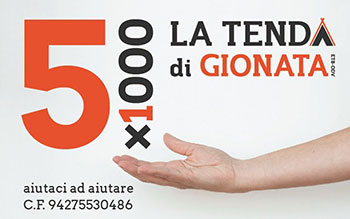Three queer stories from the Jewish tradition
Sermone pronunciato dal rabbino Steven Philp di Mishkan*, della comunità ebraica inclusiva di Chicago (USA), liberamente tradotto da Innocenzo Pontillo
Do you know what? Judaism is also a little gay. I know this might sound strange, considering that some Torah verses have been used to justify persecution of the LGBTQ+ community. (But we can talk about how misinterpreted they are another time.) Today I want to focus on something more fun: queer moments in Jewish sacred texts.
Here's the thing: we don't see what we're not looking for. If you don't expect to find anything gay in the Torah or the Talmud, you won't notice it. But if you read these lyrics through — let's call it — a rainbow lens, you'll discover a lot of things just waiting to be recognized. Rabbi Benay Lappe calls it “the donkey phenomenon”. There are lots of donkeys in the Torah, but no one notices it... because we are not donkeys. If a donkey read the Torah, however, he would notice every single donkey, even the ones that were only suggested. The same goes for us queers: we don't fit inserting gay stories in the lyrics, we're just acknowledging that they've always been there.
Here are three of my favorite queer stories in the Jewish tradition.
1. Adam = Eve (Intersex icons) Let's start from the beginning. In the first chapter of Genesis we read: “And God created Adam [the first human] in his own image; in the image of God he created them; male and female he created them.”. The rabbis were perplexed: first we speak of a single person, then of two (or at least more genders). Furthermore, in the next chapter, it is said that Chava (Eve) was created from a "part" of this first man. What does it mean?
The rabbis explain that Adam was intersex: a being with two faces, four arms, four legs, male and female genitalia. Next, God splits this human in two to give him a mate. Surprise: the idea of intersexuality and non-binary is not new! The rabbis recognized at least six different sexual and gender identities. Pretty gay, right?
2. Dinah = Butch icon
A little later in the Torah, we find the story of Dinah. Imagine: Yaakov (Jacob) has two wives, Leah and Rachel (polyamory ante litteram), who are sisters. There is tension between them, and in the rush to have children (because that's how patriarchy works), Leah and Rachel also involve their slaves Bilhah and Zilpah. In the end, Leah has six children, Bilhah and Zilpah have two each, and Rachel…none.
But when Leah becomes pregnant with another child, she realizes that Yaakov (Jacob) is destined to have only 12 sons. She wants to help her sister Rachel (who was pregnant to have a son), so she prays to God. Her prayer works: the biological sex of their children changes in the womb, but souls always remain the same.
How do we know this? Well, Dinah, Leah's daughter, is described as a real butch: an explorer, adventurous, rebellious, who prefers to be out in the fields with men. And Yosef (Joseph), Rachel's son, what is he like? Truly a “super femme” with her multi-colored coat. Here you go: Dinah, the first butch lesbian, and Yosef (Giuseppe), the drag king!
3. Rabbi Yochanan = Bisexual Icon
We arrive at the Talmud. Two protagonists: Reish Lakish, former gladiator and bandit; Rabbi Yochanan, one of the greatest Torah scholars and… beautiful. So beautiful that, it is said, he sat in front of public baths to give birth to beautiful babies in pregnant women who saw him.
One day, Rabbi Yochanan was bathing in the river. Reish Lakish sees it and is struck by it. He dives into the river with all his clothes on. Rabbi Yochanan tells him: “With that passion you could study the Torah!”. And Reish Lakish answers him: “With that beauty you look like a woman!”
Some think that Reish Lakish mistook Rabbi Yochanan for a woman (he later married his sister), but... that doesn't convince me. Reish Lakish could be a bisexual icon.
Pride as joyful rebellion
It may seem frivolous to tell such light stories when there is so much pain in the world. But the Pride celebration is an act of resistance against those who would like to destroy us. Pride is loud, colourful, sexy and… gay in every sense. It is the refusal to return to the shadows.
My hope, for anyone who is LGBTQ+, or a supporter of us, is that when the world tells us to be small, we respond by becoming bigger, queerer, louder, happier, and more ourselves than ever before.
*This discourse (drash) was originally given in observance of Pride Month, in Shabbat evening prayer on June 10, 2022. Rabbi Steven shared three queer stories found in Jewish tradition.
Original text: Has Judaism Always Been Gay? Three Queer Jewish Stories






